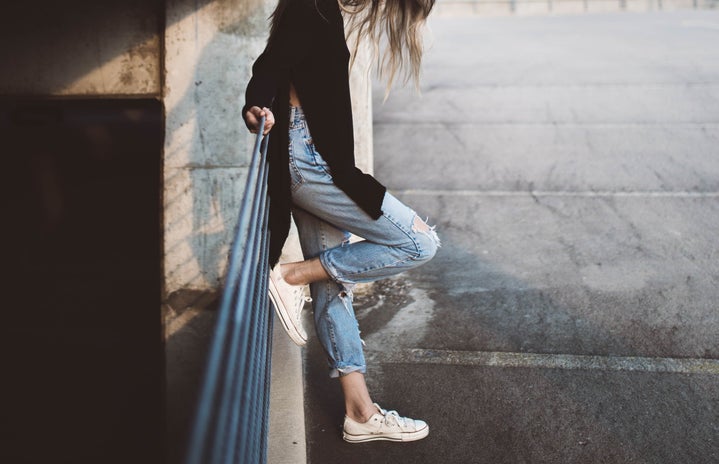Picture this: Two people walk down the street in a black hoodie, ripped jeans and sneakers. The difference? One is your college classmate, the other Kendall Jenner, who also has the word “BALENCIAGA” written across her sweatshirt. So who gets best dressed?
If you say the supermodel, you’ve been drawn in to the flashy world of high-end labels like the rest of the world. But what makes ten average-sized letters heat pressed onto a garment more stylish than the next? The $800 price tag difference could certainly sway your answer. But when looking at an outfit with a broader lens, you see it for more than the name of the brands and instead for the intricate thought process of each detail that make up a whole look.
The streetwear style phenomenon has been evolving since the 1970s, originating from the hip-hop and surf cultures in Los Angeles. The trend was fittingly named after young people who spent most of their time in the street, usually in disadvantaged neighborhoods. It made them to get out of the house and perform other recreational activities, whether that was sports, dance or fitness. The clothes they wore while doing it allowed them to establish themselves in the critical society, and also be comfortable while doing it.
Photo Courtesy The Plug
A surfboard designer, Shawn Stussy, can be credited with starting the entire trend as he began printing his logo on t-shirts and selling them. If you can think back to 1970, a graphic tee did not cost anywhere near, let’s say, a handbag. It was merely priced for its fit and function. The affordability and realisticness of the clothes are what made it popular amongst the lower class crowd. These young adults could then get multiple pieces, put them together however they thought worked best, and make it their own complete look.
Photo Courtesy Hypebeast
This process called for a lot of creativity and originality in order to pull off the outfit. Because each garment wasn’t made by a high end designer whose pieces are constructed in the most expensive way (yet), their head-to-toe look included multiple different elements and stood out in its own way amongst the crowded streets.
As this youth fashion scene grew into other cultures in cities like New York, in 1994, the Supreme brand caught on the wave. They released new products featuring their iconic red logo in a collection of relaxed, yet clean pieces. Supreme grew street wear’s popularity with the status of their already-established name, however this time in a price point the trend hadn’t seen yet, with the average t-shirt retailing for $200.
Supreme’s entrance into the streetwear game created a whole new margin for the style. Other designer labels like Louis Vuitton and Prada joined the category and released even more expensive items. Collaborations across brands now become extremely popular to gain exposure, which also heightened prices.
Photo Courtesy Heart of Cool
As approximately 60 complete head-to-toe outfits from original street wear brands can be bought with just one designer item, we have seen a decline in the creativity of looks. It doesn’t take much now for people to feel stylish because of the quantitative value something has.
It takes just one t-shirt or pair of pants with the name of a high end designer on it for people to feel unstoppable because of the status consumers have given these designers. It is rarely seen now that people who can afford these items intricately pair it with other unique items to achieve that fool “look” that was once claimed by youth that started the trend in their neighborhood.
Photo Courtesy Twitter
Those who don’t have an upper class income, or even who just want to stick with their roots, continue to keep the old ways alive in the streets. By reusing clothes and being intricate with their pairing choices, the individual flavor that streetwear once had never dies.


